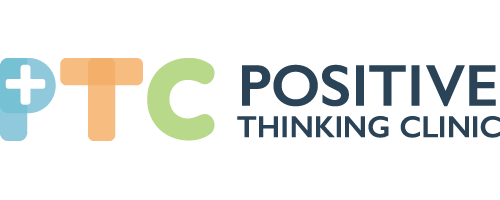
Therapy Interventions
Behaviour therapy (BT)
BT is based on the belief that behaviour is learned in response to past experience and can be unlearned, or reconditioned, without analysing the past.
Cognitive behaviour therapy (CBT)
This combines cognitive and behavioural techniques. Clients are taught ways to change thoughts and expectations with accompanying relaxation techniques. CBT supports clients to address issues e.g., stress-related ailments, phobias, obsessions, eating disorders, and more. In addition it often accompanies pharmacotherapy interventions when treating major depression.
CBT is based on the idea that our thoughts, feelings, and behaviours are constantly interacting and influencing one another. How we interpret or think about a situation determines how we feel about it, which then determines how we will react.
The pattern looks like this;
Situation (something happens) > Thought (the situation is interpreted) > Emotion (a feeling occurs as a result of the thought) > Behaviour (an action in response to the emotion).
Negative thoughts are irrational beliefs. Many thoughts also become automatic and occur outside our awareness, as if they are a reflex. These are called automatic thoughts.
When a thought occurs automatically, we aren’t able to assess it for accuracy, because we don’t even know how this has occurred. We simply accept the thought as truth and move on. Sometimes, thoughts that are both irrational and automatic can lead us to experience a negative emotion without us ever becoming aware of why.
As a result of thoughts about a situation, we experience emotions. Basic emotions are love, joy, surprise, anger, sadness, and fear.
Its important to understand that thoughts and emotions can occur outside our awareness, yet still impact our behaviour. This knowledge justifies why we need to practice identifying our thoughts and feelings if we want to change our behaviour.
Negative thoughts are more common in people suffering from mental illness such as anxiety and depression.
Thoughts we have in any given situation are influenced by our core beliefs. These are beliefs that we hold at the centre of who we are that describe the basic nature of the world. e.g., “people are generally good”, “I am unlovable”, “the world is a dangerous place.”
Core beliefs are developed from a person’s unique personal experiences. However, these beliefs aren’t always accurate. Unhealthy thinking patterns, called cognitive distortions, can lead to the reinforcement of negative thoughts and emotions. Cognitive distortions are common but irrational ways of thinking that can negatively impact emotions and behaviour.
Cognitive Distortions include:
- Magnification and Minimisation; exaggerating or minimising the importance of events. Believing ones own achievements are unimportant, or that their mistakes are excessively important.
- Catastrophising; Seeing only the worst possible outcomes of a situation.
- Overgeneralisation; making broad interpretations from a single event.
- Magical thinking; the belief that actions will influence unrelated situations.
- Personalisation; the belief that one is responsible for events outside of their own control.
- Jumping to conclusions; interpreting the meaning of a situation with little or no evidence.
- Mind reading; interpreting the thoughts and beliefs of others without adequate evidence.
- Fortune telling; the expectation that a situation will turn out badly without adequate evidence.
- Emotional reasoning; the assumption that emotions reflect the way things really are.
- Disqualifying the positive; recognising only negative aspects of a situation while ignoring the positive. One might receive many compliments, but focus on a single piece of criticism.
- “Should” statements; the belief that things always need to be a certain way.
- All-or-nothing thinking; thinking in absolutes such as ‘always’, ‘never’, or ‘every’.
Solution-focused brief therapy
This promotes positive change rather than dwelling on past problems. Clients are encouraged to focus positively on what they do well, to set goals, and work out how to achieve them.
Person-centred therapy
This allows clients to see themselves as persons who have the power to change their circumstances, rather than to simply accept their circumstances and position. The client is assisted in developing internal resources, and the ability to freely express emotions and feelings in a safe environment without judgement. This assists clients to come to terms with any negative feelings, which may have caused emotional problems.
Acceptable mental health care management strategies include:
- Psychoeducation (including motivational interviewing)
- Cognitive behavioural therapy including:
- Behavioural interventions
- Behaviour modification
- Exposure techniques
- Activity scheduling
- Cognitive interventions
- Cognitive therapy
- Relaxation strategies:
- Progressive muscle relaxation
- Controlled breathing
- Skills training
- Problem solving skills and training
- Anger management
- Social skills training
- Communication training
- Stress management
- Parent management training
- Interpersonal therapy (especially for depression)
- Narrative therapy (for Aboriginal and Torres Strait Islander people).
Mindfulness
Mindfulness is about witnessing the breath, thoughts and sensations as they arise and change moment by moment. People should expect to have thoughts – thats what brains do. The issue is; what do we do with these thoughts?
‘Step back’ inside your head and observe thoughts as they come, saying something like, ‘oh, thats just a thought, just another thought’ before coming back to breath and sensations, acknowledging the fact that a thought has arisen, but not engaging with it.
Not all thoughts are worthy of our attention, but that doesn’t mean we try to get rid of them; this will only encourage more thoughts.
Mindfulness trains us to use the right brain; awareness of the whole picture, of connections. The right brain understands humour. What it cannot do however is “think” in the abstract. And most thought is abstract (left brain).
Mindfulness teaches awareness. This is different to thought. And just the simple act of awareness can bring healing.

